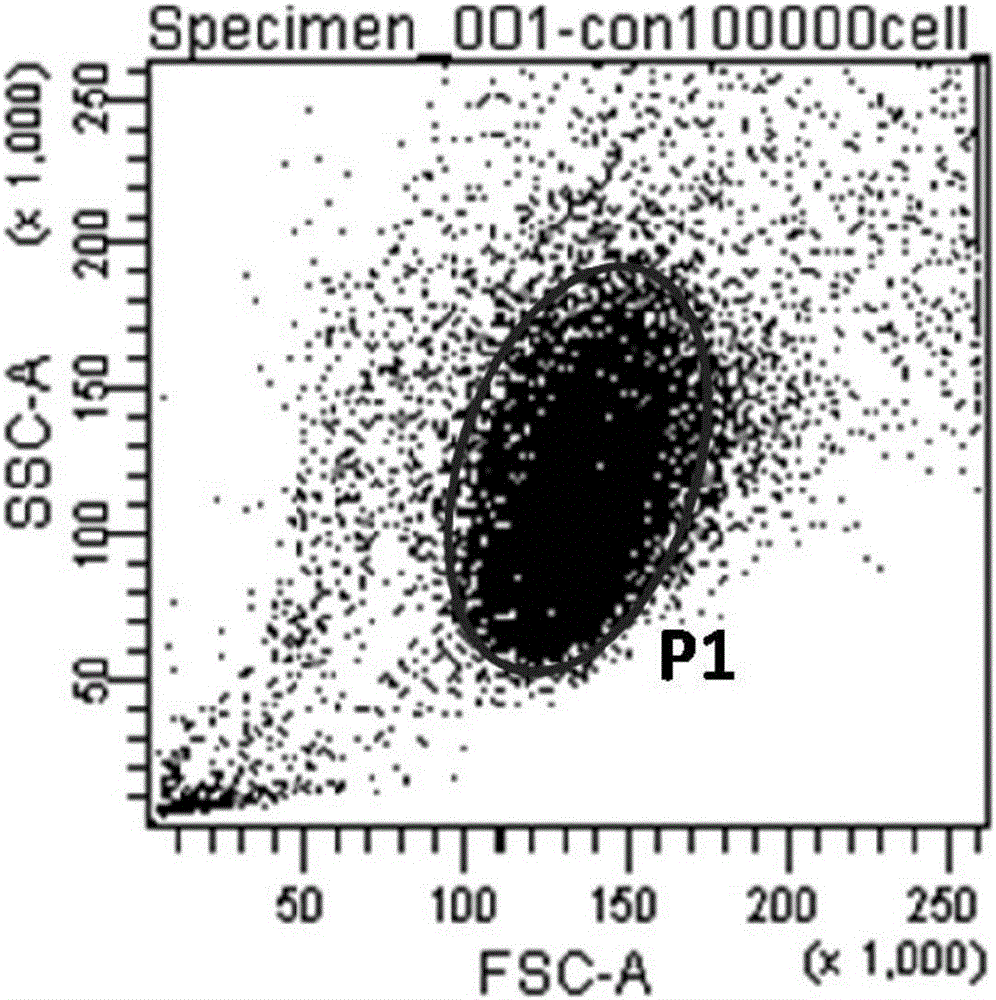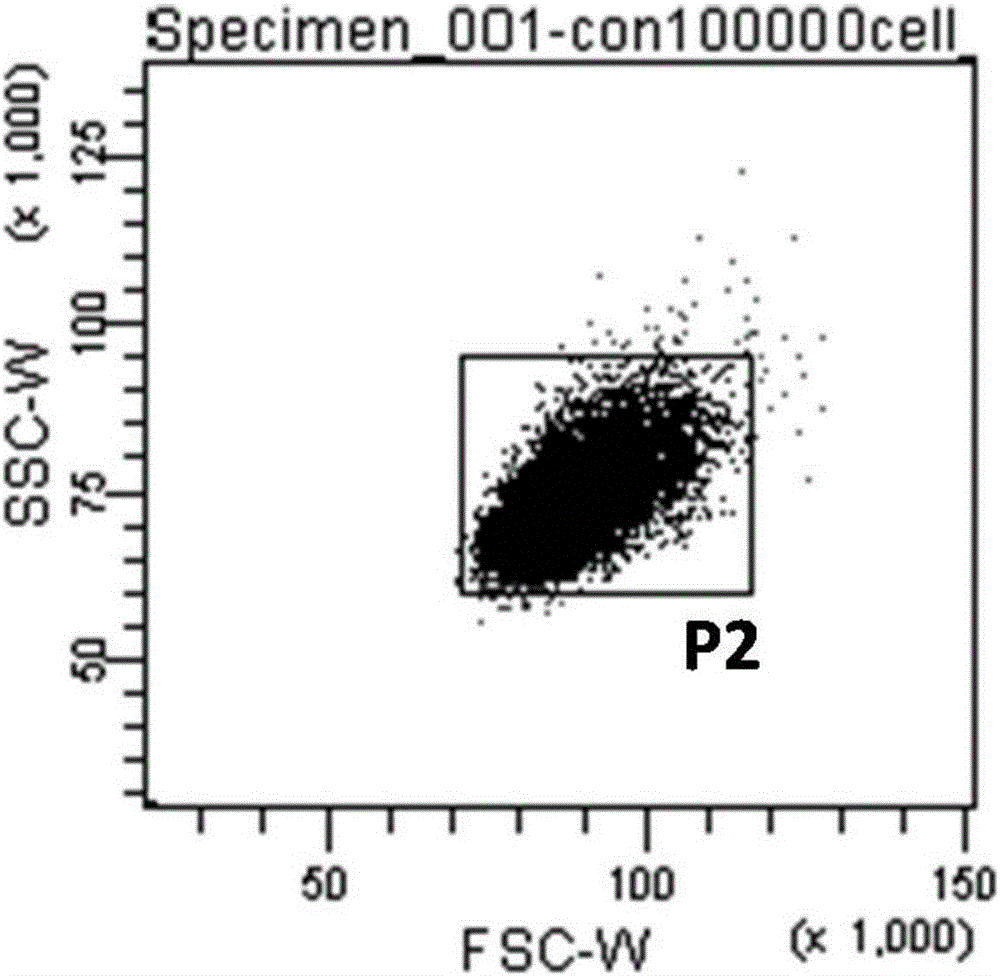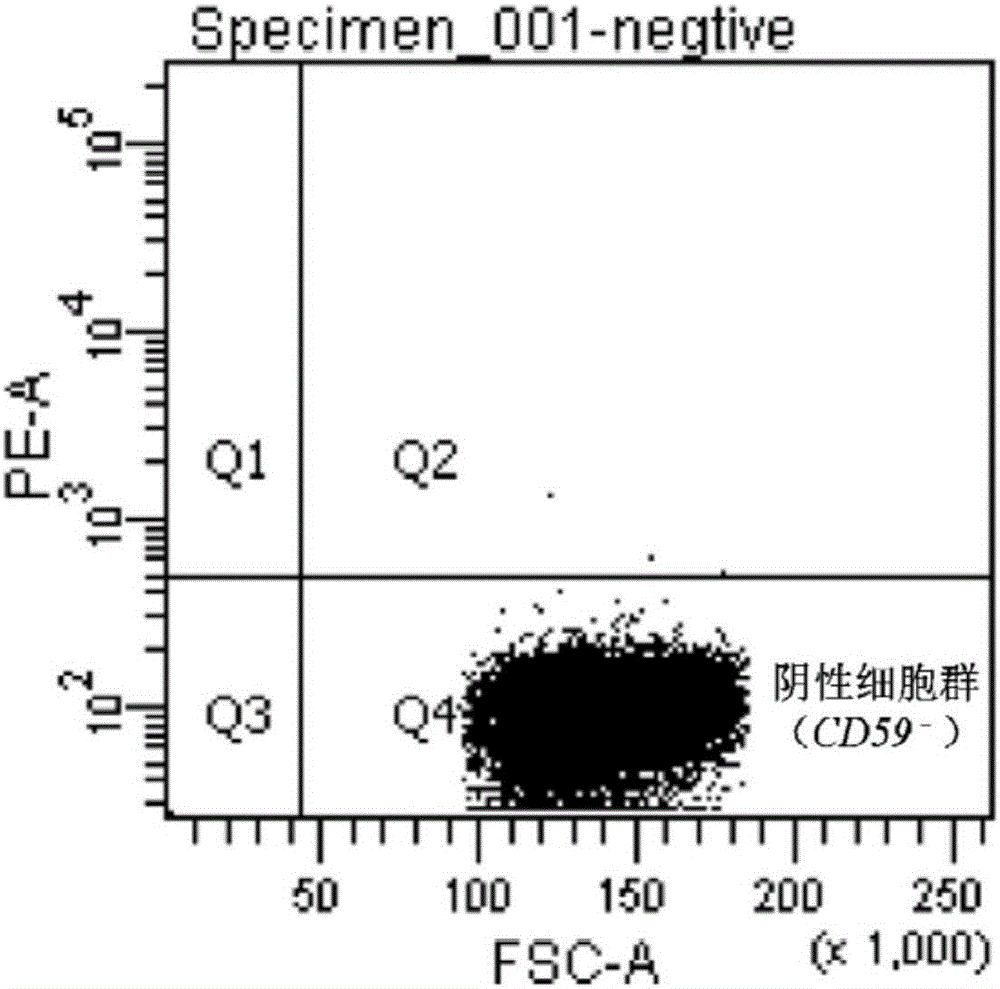Method for performing high-throughput screening on gene deletion mutation
A screening method, gene deletion technology, applied in the direction of mutant preparation, etc., can solve the problems of high antibody preparation cost, large amount of antibody complement, long cycle, etc., to achieve the effect of improving accuracy and sensitivity, avoiding complement toxicity, and high sensitivity
- Summary
- Abstract
- Description
- Claims
- Application Information
AI Technical Summary
Problems solved by technology
Method used
Image
Examples
Embodiment 1
[0053] A high-throughput screening method for gene deletion mutations in this embodiment is applicable to the mutagenicity analysis of various environmental pollutants such as asbestos, organic pollutants, heavy metals, radiation, etc., and includes the following steps:
[0054] (1) Cell treatment and continuous culture
[0055] Normal culture two dishes A L cells (including wild-type A L cells from wild-type A L Cell development of various defective cells and constructed cell lines) to the logarithmic growth phase were divided into control group and treatment group, that is, one dish was not treated, and the other dish was continuously treated with 2 μg / mL sodium arsenite for 24 hours (induced mutation), then control group and treatment group A L Each cell is 2.0×10 5 / ml cell density was replanted into the culture dish and cultured continuously for 7 days, so that the surviving cells after treatment had enough time to recover from the temporary stagnation of growth, and ...
Embodiment 2
[0078] A high-throughput screening method for gene deletion mutations in this embodiment is applicable to the mutagenicity analysis of various environmental pollutants such as asbestos, organic pollutants, heavy metals, radiation, etc., and includes the following steps:
[0079] (1) Cell treatment and continuous culture
[0080] Normal culture two dishes A L cells (including wild-type A L cells from wild-type A L Cell development of various defective cells and constructed cell lines) to the logarithmic growth phase were divided into control group and treatment group, that is, one dish was not treated, and the other dish was continuously treated with 1 μg / mL sodium arsenite for 48 hours (induced mutation), then control group and treatment group A L Each cell is 3.0×10 5 / ml cell density was replanted into the culture dish and cultured continuously for 6 days, so that the surviving cells after treatment had enough time to recover from the temporary stagnation of growth, and ...
Embodiment 3
[0100] A high-throughput screening method for gene deletion mutations in this embodiment is applicable to the mutagenicity analysis of various environmental pollutants such as asbestos, organic pollutants, heavy metals, radiation, etc., and includes the following steps:
[0101] (1) Cell treatment and continuous culture
[0102] Normal culture two dishes A L cells (including wild-type A L cells from wild-type A LCell development of various defective cells and constructed cell lines) to the logarithmic growth phase were divided into control group and treatment group, that is, one dish was not treated, and the other dish was continuously treated with 4 μg / mL sodium arsenite for 12 hours. (induced mutation), then control group and treatment group A L Each cell is divided into 5.0×10 5 / ml cell density was replanted into the culture dish and cultured continuously for 8 days, so that the surviving cells after treatment had enough time to recover from the temporary stagnation of...
PUM
 Login to View More
Login to View More Abstract
Description
Claims
Application Information
 Login to View More
Login to View More - R&D
- Intellectual Property
- Life Sciences
- Materials
- Tech Scout
- Unparalleled Data Quality
- Higher Quality Content
- 60% Fewer Hallucinations
Browse by: Latest US Patents, China's latest patents, Technical Efficacy Thesaurus, Application Domain, Technology Topic, Popular Technical Reports.
© 2025 PatSnap. All rights reserved.Legal|Privacy policy|Modern Slavery Act Transparency Statement|Sitemap|About US| Contact US: help@patsnap.com



